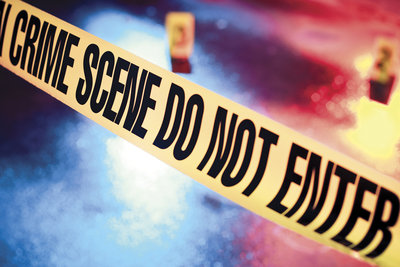The murder rate in Jersey City climbed from 12 to 20 from 2012 to 2013, according to statistics released in May by the New Jersey State Police. However, most other areas of crime declined in that period. Six of the murders took place over a three-week period during the summer. Thus, in the next few weeks, the city and Police Department expect to unveil a plan of action they hope will prevent violence from escalating this summer as it did last year.
While gun assaults declined from 184 to 138, assaults with knives and other weapons rose slightly during the same period. Simple assaults dropped moderately, while burglary, theft, and reported stolen vehicles showed significant declines.
Crime also declined during the first quarter of 2014, as compared with that time last year. But Public Safety Director James Shea said while the numbers may show a positive trend, he never loses sight of the fact that these crimes involve people.
“Every number represents a victim,” he said. “We can’t be self-satisfied with lower numbers when each is a victim of a crime.”
While a number of local business people say they feel safer today than they have in the past, Shea said he is striving to improve the situation.
“In most cases, the people involved in a shooting are also involved in some other activity.” – Public Safety Director James Shea
____________
Shea, Mayor Steven Fulop, and Police Chief Robert Cowan are not taking the positive numbers for granted, especially considering the violent crime spree that took place last summer. The three officials review crime stats on a daily basis, and review the circumstances of every shooting incident.
The department has already made several important changes that address violence in the city. In most cases, shooting victims knew their attackers, and were part of a complex system of retribution that the Police Department is seeking to predict in order to prevent additional shootings.
“This does not include innocent victims,” he said. “These are rare. That’s why they shock us so much.”
Gangs generate violence
In most cases, people involved in various gang or other interrelated activities are the ones involved in shootings. Often one person who gets shot will inspire someone who knows them to seek revenge. By looking at each case and the people involved, the police can sometimes intervene and prevent a revenge shooting and allow time for those involved to cool down.
Jersey City police work closely with the Hudson County Prosecutor’s Office when investigating homicides. The department has also set up a new Cease Fire Unit that includes six of the top detectives in the city and a supervisor dedicated to investigating each shooting incident with the aim of preventing retaliation. This unit focuses on such cases in a way other detectives were unable to do in the past.
“In most cases, the people involved in a shooting are also involved in some other activity,” Shea said.
Many of the witnesses and even victims of shootings are uncooperative. Witnesses are either fearful of retaliation if they talk to the police, or were involved themselves in some illegal activity, Shea said, making them reluctant to come forward. In the past, detectives who had a number of cases to deal with often concentrated on those in which witnesses cooperated.
“But this unit will continue to try and solve all these cases, doing what they can do to get witnesses to cooperate,” he said.
A street-wise approach to homicide
In the past, detectives usually concentrated on cases within their district, so they could not see how a shooting in one part of the city might be related to a shooting elsewhere. The new unit will be able to get a broader view of each case.
Shea said, “By looking at it all, the unit can react to stop the next shooting from taking place.”
This unit will work from 6 p.m. to 2 a.m., hours when many of these crimes take place, sometimes moving to try to prevent a potential shooting when they get word something might happen.
“They look for the connections between the shootings,” Shea said. “Then they react quickly.”
In the past, gangs in different territories often did not come into contact. Social media has changed this, allowing one group to taunt another group, and thus incite violence. The police use tools such as local cameras, social media reviews, and other data to look for signs of escalation.
“Each time we stop someone with a gun, we stop a potential murder,” he said.
The department uses police presence itself to try to reduce potential violence, with highly visible patrols and targeted sweeps of violence-prone areas.
At the same time, the Police Department is decentralizing some investigative units. Narcotics units, for example, are more effective when the detectives work regularly in the area they investigate rather than bringing detectives in from a central location. This also provides eyes and ears on the streets for potential violence.
Statistics show that people who know of someone involved in violent crime are likely to be involved in a violent crime in the future. But this is a ripple effect that can be prevented, Shea said.
“We can keep the snowball from rolling down the hill by providing a cooling off period,” he said.
Al Sullivan may be reached at asullivan@hudsonreporter.com.
